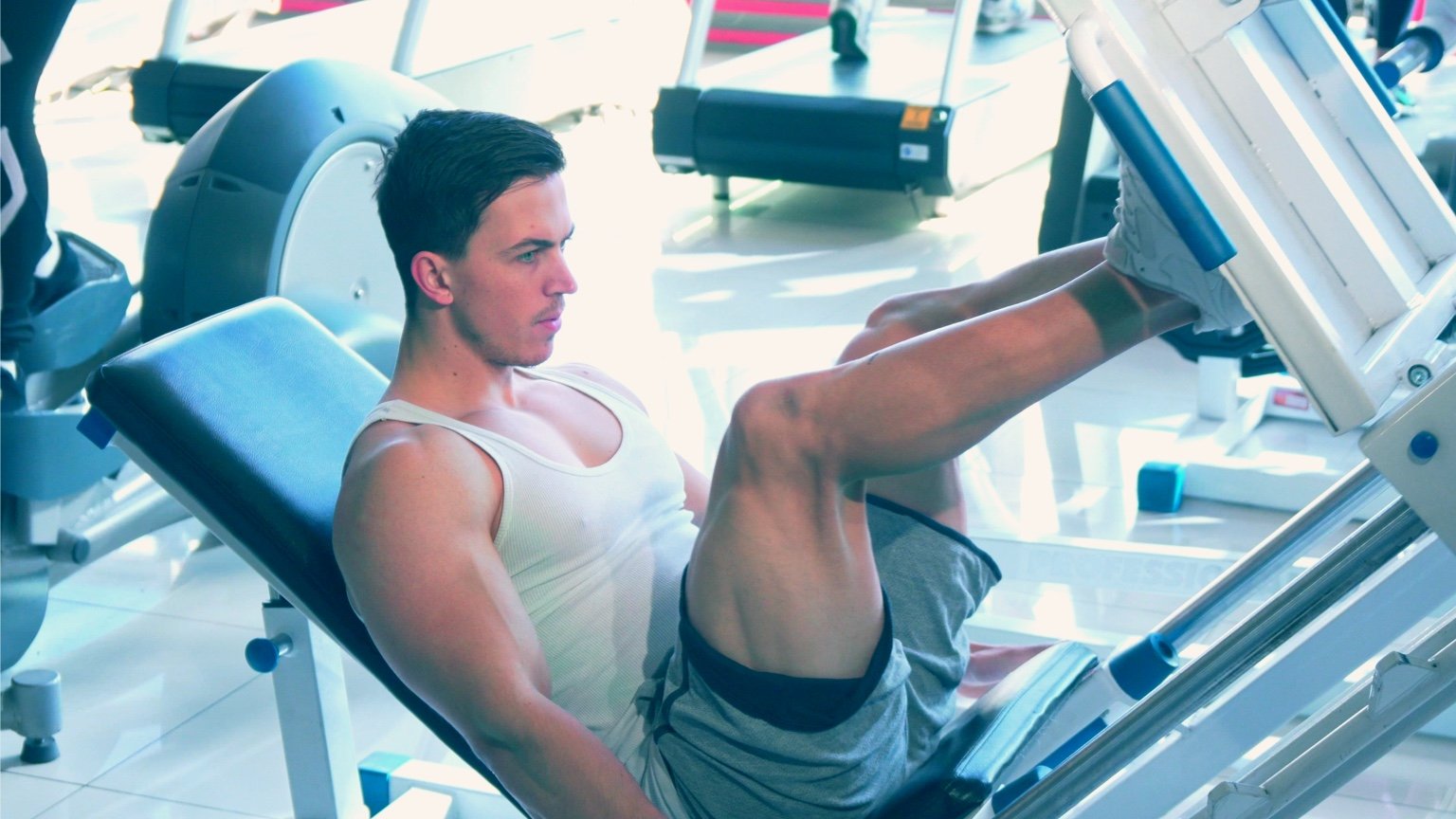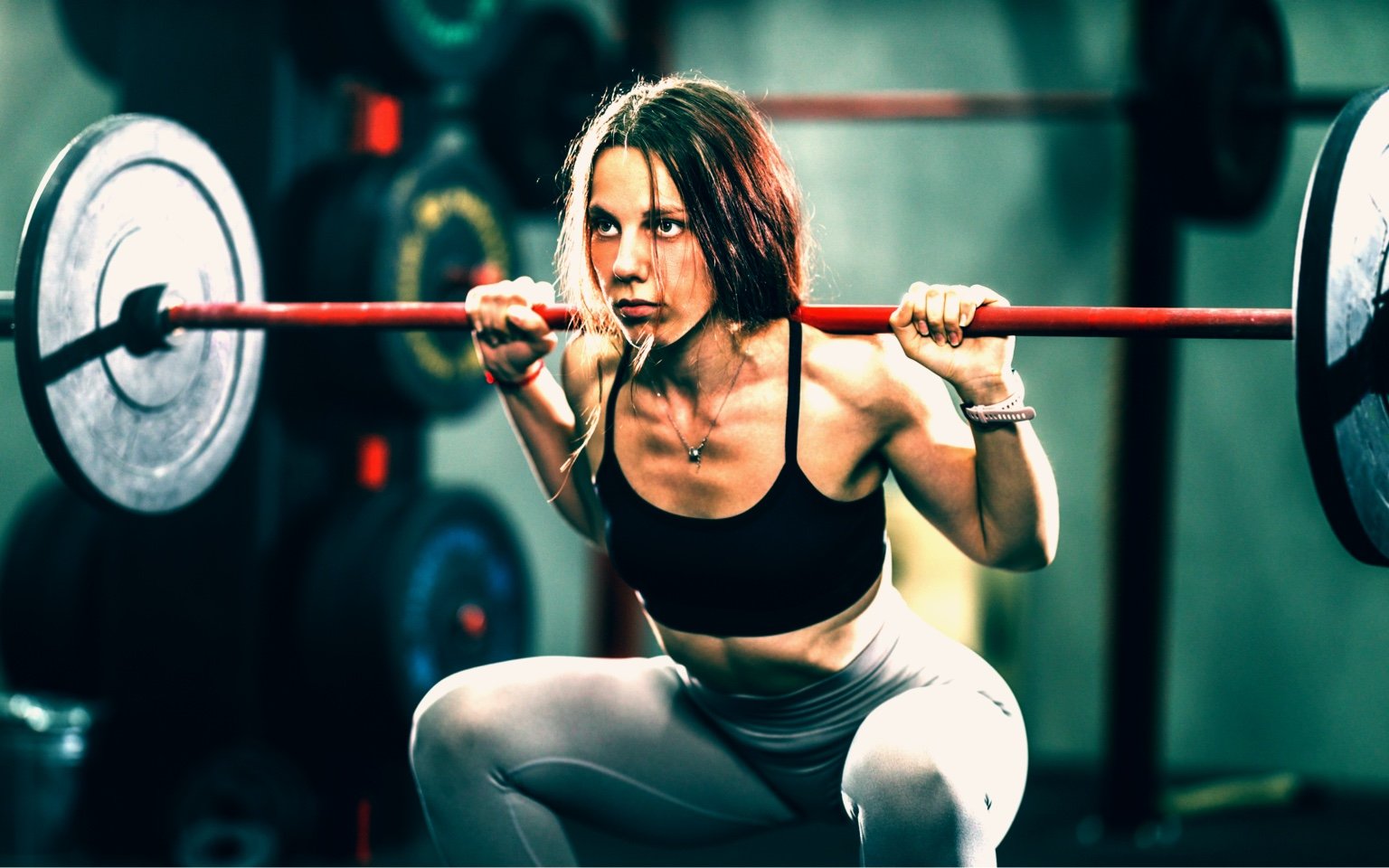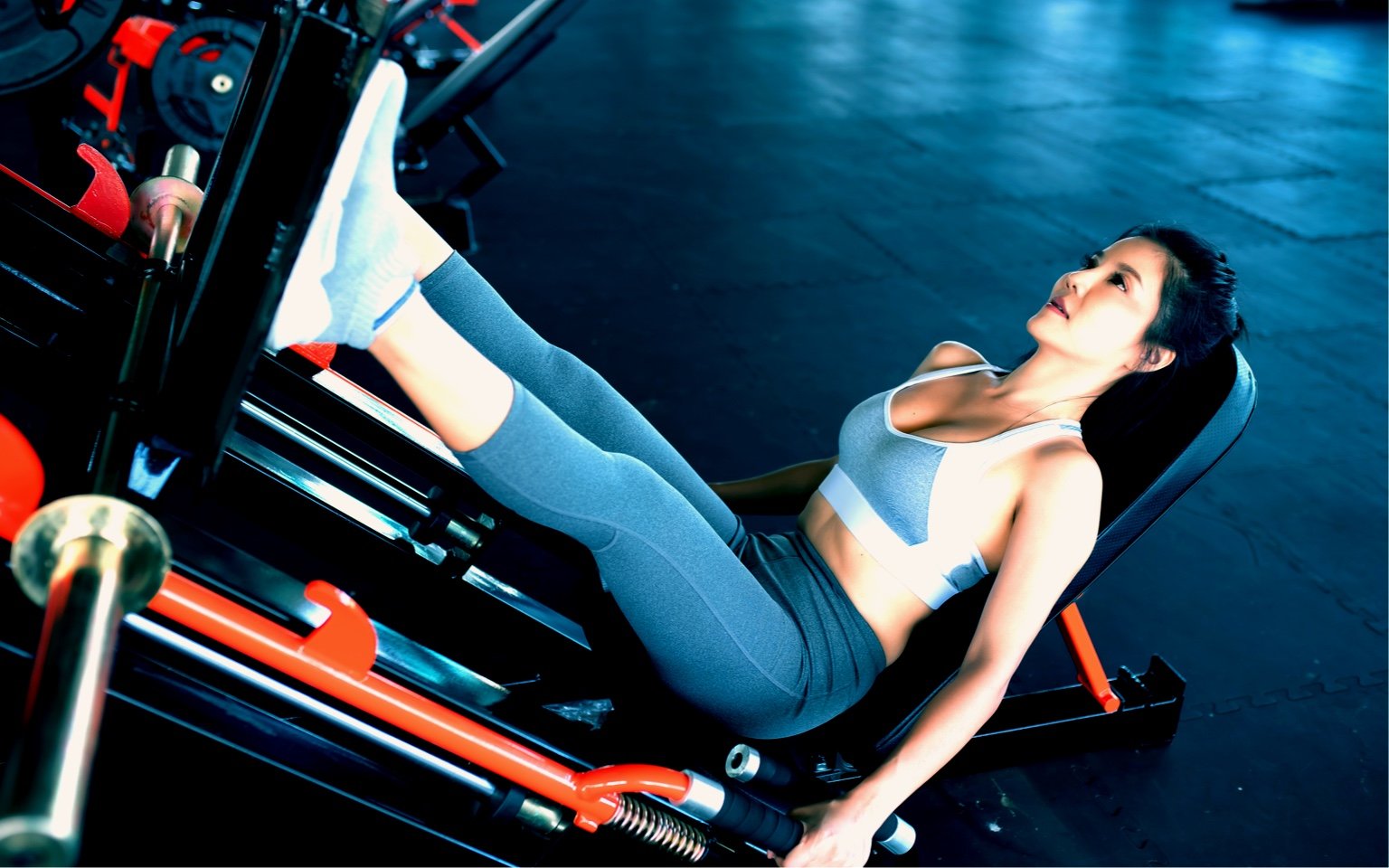How To Do Leg Press Correctly – For All Fitness Levels

The leg press is a popular compound strength exercise where, using a leg press machine, you push a weight using your legs. The exercise targets all of your lower-body muscle groups, particularly emphasizing your quads, hamstrings and glutes.
Because the leg press machine makes it easy to perform in a controlled way, this exercise requires less balance and mobility than the similar barbell squat. This makes it a great option for novice lifters in particular. The leg press, however, is not as comprehensive as the barbell squat and it doesn’t fully engage your core, lower back or calves in the same way squats do.
Leg press is also known as machine squat press, seated leg press or machine leg press. You need a leg press machine to perform this exercise – this is a popular piece of equipment you will find in any gym!
What muscles does the leg press work?
The leg press works your lower body effectively. The primary muscles engaged are your quads, glutes and adductors. But the leg press also works your hamstrings, abs and calves (to a lesser extent).
Your quads (quadriceps) are the muscles at the front of your thighs. Their function is to straighten your knee from the bent position, and they help stabilize your knee joint. Your quads help in exercises like climbing, walking, running and jumping.
Your glutes are made up of three muscles in your buttock. They produce hip extension (moving your leg back), rotation and hip abduction (moving your leg out to the side), as well as provide stability to your upper body when you stand. Your glutes are key muscles in propelling your body forwards, jumping and heavy lifting.
The adductor muscles can be found in your inner thighs. They are responsible for leg adduction (moving your legs towards your body’s center line) and stabilizing your legs in everyday activities. They also play a part in medial rotation of your thighs. Strong adductors are good for overall athletic performance and sports including baseball, golf and tennis.
The leg press also works your hamstrings as secondary muscles. Your hamstrings are made up of three muscles – the biceps femoris, the semitendinosus and the semimembranosus. Together, these muscles allow your leg to bend about the knee and assist in hip extension. Strong hamstrings are beneficial in everyday activities like walking, running and jumping.
Benefits of leg press
Squat performance
Regularly performing leg press can improve your squat performance. This is because the exercise strengthens your quads (the large muscles at the front of your thighs), which are crucial for squatting.
As part of a workout routine, leg presses are a great way to add volume to your quads and other less muscles, suffering less fatigue than barbell squats. If you’ve plateaued with barbell squats, leg press provides a way to continue strengthening your quads.

Both leg press and squats target your quads, hamstrings and glutes. But squats engage more muscle groups including your core and stabilizing muscles. If you neglect squats, you risk building a muscular imbalance, so you should see leg press as a complement to squats rather than a replacement.
Lift heavier weights
Compared to barbell squats, the leg press provides an opportunity to lift greater weight. This can be beneficial if your goal is to build strength and endurance in your lower-body muscles. Still, it’s important to lift a weight that is appropriate for your body and the exercise, so start with a lighter weight and gradually progress to reduce the risk of injury.
A related side effect of doing leg press is you will be training your knees to handle heavier weights. Because leg press works your lower body muscles without putting as much stress on your knees, over time your knees will gain in stability and strength. This will be beneficial when doing squats and related lower body exercises.
The leg press is an efficient way to build lower body strength because it targets your quads, hamstrings and glutes. Lifting with a heavier weight can stimulate greater muscle growth.
Good for beginners
The leg press is a safer way to introduce your body to higher levels of resistance. As well as the immediate benefits of promoting muscle growth, you are also preparing your body for more complex free-weight exercises like the barbell squat.
Leg press machine
There are two common types of leg press machine:
- Horizontal leg press machine. In this machine, you are seated upright, and push against the pad in a horizontal fashion. This is a good machine for beginners because it has a supportive backrest.
- 45-degree leg press machine. Here you push the weight away from you. The weight is inclined at a 45 degree angle. This type of machine engages a wider range of lower body muscles and is preferred by intermediate and advanced gym-goers.
The 45-degree machine is typically fitted with a ‘sled’ with the weight attached to it. Horizontal leg press machines normally have a weight stack where you can change the resistance by moving the pin on the stack.

Both types of machine come with a safety pin/catch that will prevent the weight trapping you if you can’t lift it. Pay attention to the instructions on the machine to set the pin correctly to avoid accidents or injuries.
Different types of leg press machine target your muscles slightly differently. There are more variations that these two common types, but you’ll find one or two of these in most gyms. If you can, try out different machines to find the best for your comfort and fitness goals.
How to do a leg press

- Load the machine with the appropriate weight. Pull yourself into the seat with your back placed firmly against the seat.
- Place your feet shoulder-width to hip-width apart on the footplate. Your toes should be pointed forwards or slightly outwards. Pointing your toes outwards engages a wider range of muscle groups. Your heels should be flat against the surface.
- In the starting position, your legs should be bent at a 90 degree angle. This is the optimal angle to sufficiently engage your quads, hamstrings and glutes.
- Firmly grip the handles, stabilize your body and prepare to start the leg press. At all times, keep your knees laterally aligned to your feet (legs not rolling inwards or outwards).
- Exhale as you extend your legs, pushing against the footplate. Keep your heels planted and maintain tension in your torso throughout the movement.
- Pause at the top of the press motion.
- Lower the weight in a controlled manner, keeping your glutes on the seat to protect your lower back.
- Repeat for the desired number of reps.
Sets and reps
Your goals will dictate how many reps to perform. If your goal is to increase muscle mass, aim for 6-15 reps per set. On the other hand, if your goal is to enhance strength, then 3-8 reps per set is more appropriate.
If you fatigue during the workout, adjust as appropriate. You may choose to perform reps with a shorter range of motion if you fatigue – this will stimulate muscles in your lower body while reducing the injury risk.
Proper form and safety
Don’t lock your knees
Pressing to the point of locking your knees increases the risk of injury. Stop just short of a complete lockout at the top of each movement. This will provide the maximum benefit of the exercise, keeping your muscles fully engaged, while protecting your knees.
It’s also important to ensure your knees do not move outwards during the exercise. This will lead to unnecessary stress on your knee joints. Keep your knees aligned with your feet at all times.
Foot position
Your feet should be between shoulder-width and hip-width apart. This ensures a reasonable distribution of pressure through your muscles and joints, and reduces the possibility of developing muscular imbalance or injury. Adjust your foot position for comfort. The position of your foot can change the effects of the exercise slightly.
If you take a wider stance, you will put more emphasis on your inner thighs. Likewise, taking a narrower stance will emphasize your outer thighs.
Moving your feet up and down on the footplate can also change the impact of the exercise. Placing lower on the footplate will emphasize your quads, but this does risk additional stress onto your knees. Adjust your foot position if you experience any discomfort.
Placing your feet higher up on the footplate will emphasize your hamstrings and glutes. This is a good position if your goal is to develop well-rounded lower body strength.
Placing in the middle of the footplate is a good default option, and recommended for beginners. This provides a balanced distribution of weight across the muscles in your lower body.
Flat back
Ensure you maintain a flat back throughout the leg press. Your lower back and buttocks should always be touching the seat. Pay attention to your form when you are lowering the weight. Always lower slowly and with control and keep your legs engaged rather than your lower back.
This is an important tip not only to reduce the risk of injury, but to also make the exercise more effective in terms of promoting strength and muscle growth in your legs.
Bracing your abs
When performing the leg press, it’s important that you brace your abs and core throughout the movement. This provides stability, protects your spine and makes the exercise more effective. It is important to avoid an unnecessary strain on your lower back.
Use the full range of motion
To maximize your muscle engagement, ensure you use the full range of motion when performing the leg press. Lower the weight until your knees form a 90 degree angle. If you lower too deep, however, you risk your hips lifting off the seat which can put strain on your lower back.
Leg press variations
One-legged leg press
The one-legged variation of the leg press targets the same groups of muscles as the traditional leg press, although it engages the stabilizing muscles more. This type of leg press can be beneficial as it mimics sport and athletic movements more closely than the standard leg press.
Because this exercise isolates one leg at a time, it is useful to address strength imbalances between your legs – you can use the exercise to build strength in your non-dominant leg.
Alternating your legs in the exercise ensures equal work and promotes symmetrical muscle growth and strength.
Workouts
The leg press is a great exercise to include in your regular workout routine. Use it as a later exercise in a workout session that focuses on your legs.
It’s a good idea to perform leg press exercises after your free weight exercises. The free weight exercises will build up CNS fatigue, and it’s beneficial to include leg press at this point.
Here are our popular workout routines that feature the leg press:
- The Best 5 Day Workout Split Routine
- The Best Powerlifting 3-Day Workout Routine
- The Best 7-Day Gym Workout Plan & Routine
- The Only 3 Day Split Workout Routine You Will Ever Need
